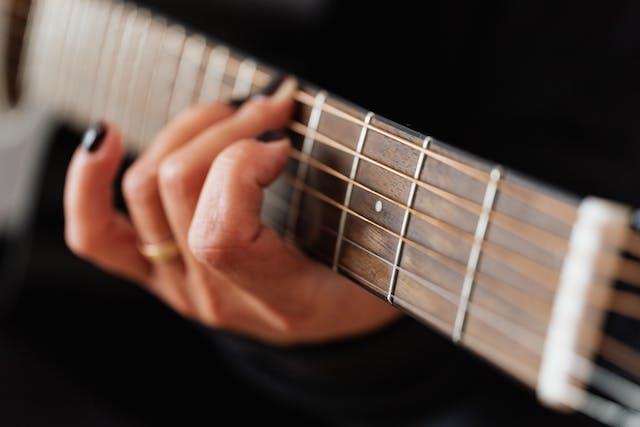Have you ever felt like your left hand just can’t keep up with the demands of the Suzuki violin repertoire? You’re not alone! Many violinists struggle with left hand technique as they advance through the Suzuki books. The good news is that with some focused attention on fundamentals, you can master fluid left hand skills.
As Dr. Shinichi Suzuki emphasized, listening and repetition are key to developing technique. However, if the body isn’t properly balanced, tension accumulates over time, limiting freedom of movement. For Suzuki students, excess weight on the first finger is a very common issue. This constricts mobility, impacts intonation, and makes extensions quite difficult!
The key is redistributing weight to the center of the hand. This allows the first and fourth fingers to move with ease while keeping a solid hand frame. Mastering left hand balance clears the path to consistency, comfort, and control from Book 1 repertoire all the way through to Paganini Caprices if you choose to get there!
Left Hand Anatomy
Before diving into violin technique, let’s quickly review hand anatomy since form follows function. The fingers consist of three bones each, connected to the palm by knuckle joints. These metacarpal joints are pivotal — they determine the freedom of motion for each finger. When weight is too far back on the index finger, mobility decreases substantially.
The thumb is also connected to the palm by a saddle joint, allowing flexible opposition of the thumb across the palm. This comes into play when we discuss thumb tension. If you squeeze too hard to compensate for heavy fingers, fluid shifting and vibrato decrease.
Here’s a simple exercise to feel the metacarpal joints at work:
- Touch your first finger tip to your thumb tip
- Slowly bend just the knuckle joint, keeping the other joints straight
- Repeat for each finger, noticing their range of motion back towards the wrist
The more openness through those base knuckles, the better!
Common Left Hand Challenges
Now let’s explore some of the common left hand challenges faced by Suzuki violinists:
Excess first finger weight – The first finger bears too much weight, limiting extension and causing other fingers to feel confined. Intonation across strings suffers.
Thumb tension – Gripping with the thumb to support a heavy first finger or hand. Restricts shifting and vibrato freedom.
Limited mobility – With a compressed hand frame, all fingers move less freely. Hard to extend the fourth finger or reach for shifts and extensions.
Intonation struggles – Particularly on string crossings. A balanced hand facilitates precise adjustments.
Double stops – Excess weight on one finger pulls pitches out of tune. A mobile hand can tune intervals by adjusting one pitch at a time.
The common theme is tension caused by an unbalanced hand. Mastering redistribution of weight and mobility is the solution!
Achieving Left Hand Balance
So what should left hand balance actually feel like? Here are a few key principles:
Relax the thumb – Avoid squeezing or using it as a “counterweight”.
Anchor on center fingers – Allow the 2nd and 3rd fingers to support some weight while keeping flexibility.
Lighten outer fingers – The 1st and 4th fingers have a lighter, variable pressure.
Maintain open palm – Visualize space instead of collapsing across the knuckles.
In this model, the 2nd and 3rd fingers provide stability while the other fingers move freely. The octave hand frame stays intact but tension dissolves.
Legendary pedagogue Ivan Galamian described balancing off the 4th finger. Others advocate starting with 2nd or 3rd finger when placing beginners’ fingers. As long as weight shifts from the thumb/1st finger, freedom increases!
Practical Tips
Implementing left hand balance takes some mindfulness at first. Try these tips daily in scales or pieces:
Check shoulder rest height – If too low, tension creeps in. Find proper height to allow freedom.
Mark knuckles with stickers – Tactile reminder to unlock those joints!
Balance hand on one finger – Let gravity do the work!
Change initial finger order – Such as 3-1-2 or 2-1-3 in early pieces.
Prioritize center fingers – Play scales on 2-3, then add 1-4.
As balance improves, pay attention when extending fingers or playing double stops. Monitor intonation and ease of movement. If tension increases, return to supporting through the center.
Application in Pieces
The Suzuki repertoire provides great etudes for left hand skill-building. Here are some pieces that exemplify specific techniques:
Two Grenadiers (Suzuki Violin School, Book 2) – Finger extensions
Witches’ Dance (Suzuki Violin School, Book 3) – String crossings
La Folia (Suzuki Violin School, Book 6) – Double stops
Any piece requiring a fourth finger extension presents an opportunity to feel liberation of the outer fingers.Pieces with string crossings reveal if weight excess pulls pitches out of tune.
If the center is balanced, the fourth finger floats up easily and first finger extends without collapse. Listening for purity of tone develops control.
Conclusion
In closing, achieving left hand balance truly unlocks consistency, stamina, and finesse in Suzuki violin students. Mastering efficient weight distribution through mindful practice of fundamentals allows advanced repertoire to feel effortless. Regaining mobility and building strength from the center out is needed to play with ease.
By progressing through the Suzuki repertoire with sound form, students accumulate the technical skills needed for graceful performances of concertos, scales, and showpieces. With balance as a baseline, the possibilities are endless!


